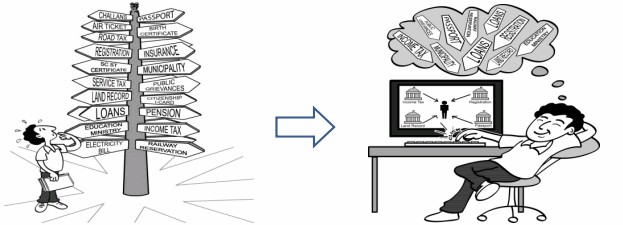Various benefits are obtained on using E-governance which includes
- Speed – Technology makes communication speedier. Internet, Phones, Cell Phones have reduced the time taken in normal communication.
- Cost Reduction – Most of the Government expenditure is appropriated towards the cost of stationary. Paper-based communication needs lots of stationary, printers, computers, etc. which calls for continuous heavy expenditure. Internet and Phones makes communication cheaper saving valuable money for the Government.
- Transparency – Use of ICT makes governing profess transparent. All the information of the Government would be made available on the internet. The citizens can see the information whenever they want to see. Current process leaves many ways to conceal the information from all the people. ICT helps make the information available online eliminating all the possibilities of concealing of information.
- Accountability – Once the governing process is made transparent the Government is automatically made accountable. Accountability is answerability of the Government to the people. It is the answerability for the deeds of the Government. An accountable Government is a responsible Government.
- Better access to information and quality services for citizens – ICT would make available timely and reliable information on various aspects of governance. As regards services, there would be an immediate impact in terms of savings in time, effort and money, resulting from online and one-point accessibility of public services backed up by automation of back end processes. The ultimate objective of e-Governance is to provide services required from birth to death.
- Expanded reach of governance – Rapid growth of internet and its use in governance would help in bringing government machinery to the doorsteps of the citizens. This increase of the reach of government – both spatial and demographic – would also enable better participation of citizens in the process of governance.
- Improving Public Administration- e-Governance administrative components, such as a computerized treasury, integrated financial management information systems, and human resource management systems, lead to greater efficiency in public administration. Features include the integration of expenditure and receipt data, control of expenditure, human resources management, intelligent audit through data analysis and the publishing of financial data.


